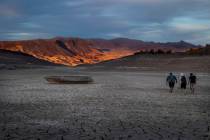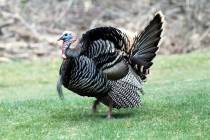Don’t be a spectacle; get some binoculars
"I don't carry binoculars. They're too heavy. If I need to look at something, I look through my scope. That's why I carry a 3-to-9."
Those are the words of an ornery old landscaper who probably spent more time talking down to student employees than caring for the grounds of my alma mater, Brigham Young. He was bragging about the 3x9-power riflescope mounted on his hunting rifle and the ability it gave him to see distant things, game and other hunters up close and personal. "Why carry binoculars?" he crowed.
The man's name has long since faded from memory, but his chilling words have not. Nor have the stories he told about looking at other hunters through that same scope just to see who they were.
This conversation took place in the day when the 7mm magnum was all the rage among hunters in Utah. I had seen what a 7mm round could do to a mature mule deer buck, and knew too well what it was capable of doing to a human body. The idea of someone pointing their riflescope -- and therefore their rifle -- at me was unsettling. And having experienced such an occurrence first hand, I can tell you the real thing is even more so.
By their reactions, I could see that others involved in the discussion were equally concerned. Perhaps they, too, had been under the gun, so to speak, as someone looked them over through a scope. It's a practice that violates the second rule of safe gun handling: "Keep the muzzle pointed in a safe direction."
In today's world of high-tech, lightweight plastics and metals, there is no excuse for not carrying quality binoculars in the field, especially when hunting big game. This is the tool you should use when checking out that shadow or movement that could be a deer or an elk.
There are numerous choices on the market, but you generally get what you pay for. That said, most hunters can find something to fit their needs for $350 to $500. Forget the bottom-line products and pocket models; you won't be happy with them.
I won't delve into make and model comparisons, but I will recommend that hunters carry at least eight-power binoculars. I prefer a 10x, but my eyes have more than a few miles on them. Anything more than that and you'll want to use a tripod. Once you select your binoculars, learn how to use them. Then learn how to use them to find your game. Then use them. Doing so can save many miles and a lot of boot leather.
Find a vantage point that provides a wide view of as much country as possible and make yourself comfortable; plan on being there awhile. Begin glassing by making a cursory search of the area before you. Look for anything out of the ordinary while quickly looking over as much country as you can. You might catch the flash of sun on a newly polished antler or the white rump patch on a mule deer or elk.
When your cursory search is completed, break down the wide view into smaller, more manageable chunks of real estate. I prefer to use a grid system similar to that used in a search-and-rescue operation. Start at one end and move methodically from areas within the grid to another. Thoroughly search each area while looking for anything that doesn't look right. This could be a color change, a shape that doesn't fully blend in with its surroundings or a movement, however slight. I have learned that a fluttering bird is often the ear of a bedded mule deer, or what appears to be a tree branch might be the fork in a set of antlers.
Be sure to inspect anything that looks out of place. Spotting a stump deer costs you nothing. Failing to spot a buck might cost you some venison. If your search in one area turns up nothing, move to a different vantage point and start over. I prefer to glass from east to west in the morning and west to east in the afternoon. It's amazing what having the sun at your back will do for your eyesight.
This might not sound as fun as zipping up and down the road on a four-wheeler, but you will see more game this way.
Freelance writer Doug Nielsen is a conservation educator for the Nevada Department of Wildlife. His "In the Outdoors" column, published Thursday in the Las Vegas Review-Journal, is not affiliated with or endorsed by the NDOW. Any opinions he states in his column are his own. He can be reached at dougnielsen@att.net.

















